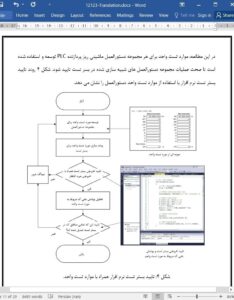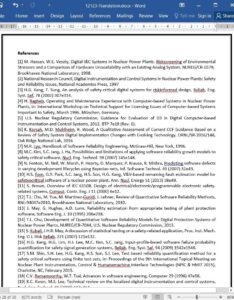Abstract
Recently, a software program has been used in nuclear power plants (NPPs) to digitalize many instrumentation and control systems. To guarantee NPP safety, the reliability of the software used in safety-critical instrumentation and control systems must be quantified and verified with proper test cases and test environment. In this study, a software testing method using a simulation-based software test bed is proposed. The test bed is developed by emulating the microprocessor architecture of the programmable logic controller used in NPP safety-critical applications and capturing its behavior at each machine instruction. The effectiveness of the proposed method is demonstrated via a case study. To represent the possible states of software input and the internal variables that contribute to generating a dedicated safety signal, the software test cases are developed in consideration of the digital characteristics of the target system and the plant dynamics. The method provides a practical way to conduct exhaustive software testing, which can prove the software to be error free and minimize the uncertainty in software reliability quantification. Compared with existing testing methods, it can effectively reduce the software testing effort by emulating the programmable logic controller behavior at the machine level.
1. Introduction
With a shift in technology to digital systems as analog systems are approaching obsolescence and because of functional advantages of digital systems, existing nuclear power plants (NPPs) have begun to replace analog instrumentation and control (I&C) systems, while new plant designs fully incorporate digital systems [1]. Compared with the analog I&C systems, the digital systems provide advanced performance in terms of accuracy and computational capabilities and have potential for improved capabilities such as fault tolerance and diagnostics [2]. However, the use of microprocessor-based digital systems in NPP safety I&C systems has triggered a big challenge in incorporating their characteristics into the probabilistic risk assessment (PRA) model of NPPs used to evaluate the digital system reliability and its risk effect on the NPP safety.
5. Conclusion
In this study, a software test method using a simulation-based software test bed was proposed. The software test bed was developed considering the characteristics of the safety-critical PLC and the CPU architecture and memory map of the PLC microprocessor. Because the software test inputs for a safety-critical application, such as the RPS of an NPP, are inputs that cause activation of protective action, such as reactor trip, the software test case was developed in consideration of the digital signal processing features of the PLC and plant thermo-hydraulics data for plant transients or accidents in an NPP. As an application of the proposed software test method, software test cases were developed for a PZR_LO_PR trip of KNICS IDiPS-RPS BP software logic and were tested by capturing the state of output variables stored in the memory map after the end of the trip logic program.











